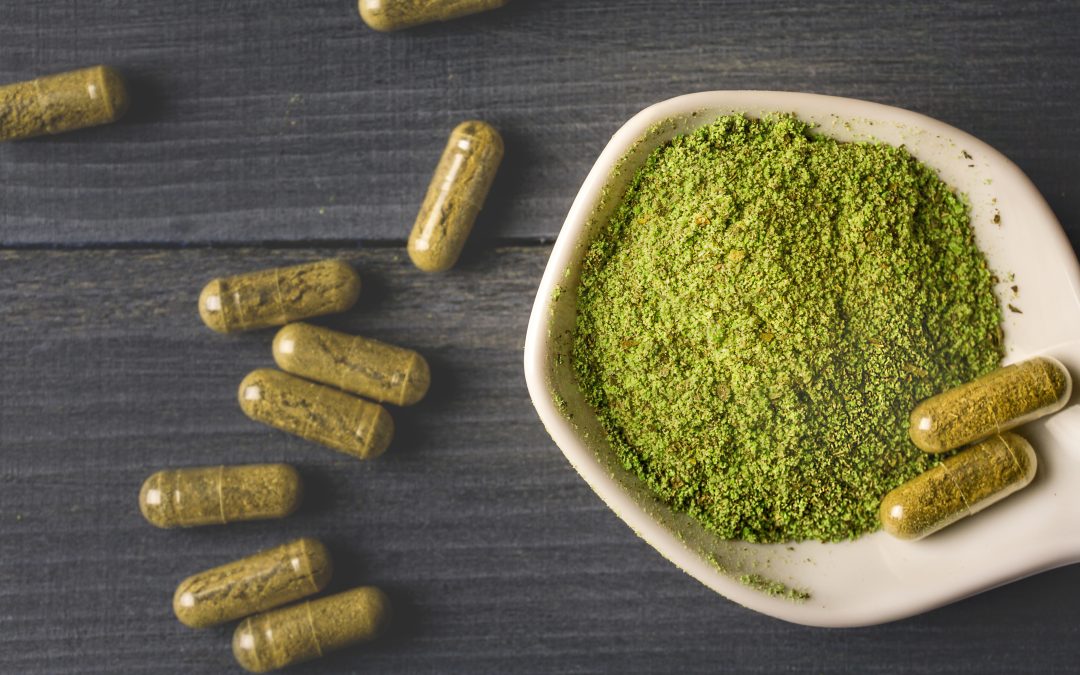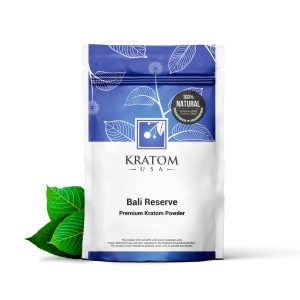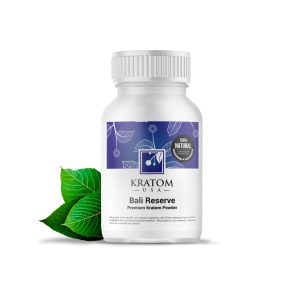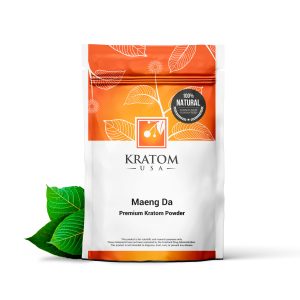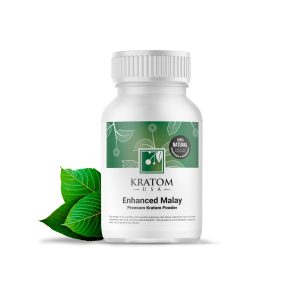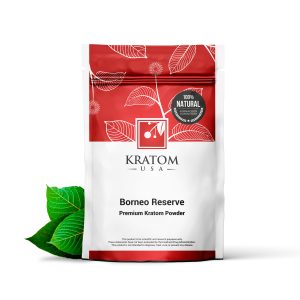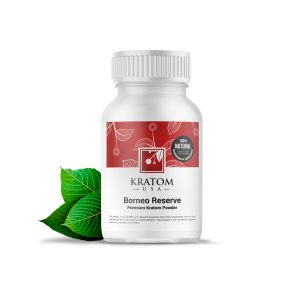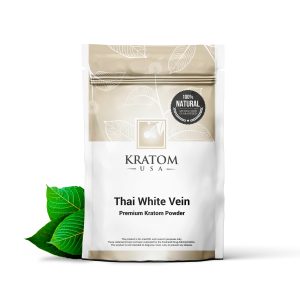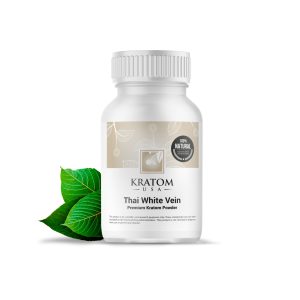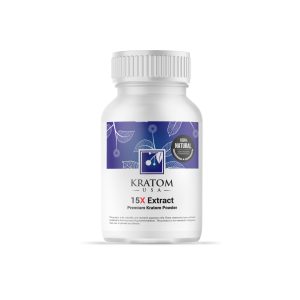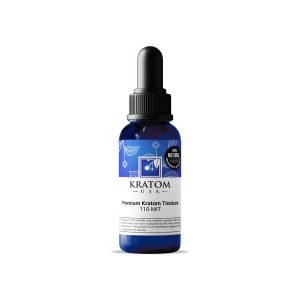Are you feeling bogged down by the constant battle against chronic pain? If so, You’re not alone. Millions worldwide are on the hunt for effective pain management. Luckily, there’s been a buzz about a natural remedy that might just do the trick: kratom.
In the quest for effective pain management, many of us find ourselves navigating through a maze of treatments, seeking something that not only works but also aligns with our desire for a more natural approach. Kratom is a natural remedy that has been gaining attention not just for its effectiveness in managing chronic pain but also as a promising alternative to prescription narcotics.
Kratom, derived from the leaves of the Mitragyna speciosa tree native to Southeast Asia, has been used for centuries by indigenous populations for its pain-relieving properties. But what makes kratom stand out in the modern world of pain management? Let’s dive into the heart of this green wonder to find the best kratom for pain.
A Natural Alternative to Prescription Narcotics
For many suffering from chronic pain, prescription opioids like Oxycodone or Hydrocodone have been the go-to. However, these synthetic opioids come with a significant downside – the risk of addiction and a host of side effects. This is where kratom shines as a beacon of hope. Unlike its synthetic counterparts, kratom offers pain relief with a lower potential for addiction. It’s a natural solution that speaks to the body’s pain receptors in a more gentle, yet effective way. So how does kratom differ from synthetic opiates?
Less Potential for Addiction
One of the most compelling arguments for kratom as a pain management solution is its lower potential for addiction compared to synthetic opioids. While all substances that alter how we feel can be habit-forming, kratom’s natural composition and the way it interacts with the body’s opioid receptors mean it doesn’t carry the same high risk of dependence. This makes it a safer alternative for those concerned about the addictive nature of traditional pain medication.
Does Not Suppress Breathing Like Prescription Opiates
One of the most significant advantages of kratom over synthetic opioids is its lower risk of causing death, primarily because it does not suppress breathing — a serious side effect associated with opioid use. Synthetic opioids, such as Oxycodone and Hydrocodone, can dangerously depress the respiratory system, leading to a high risk of fatal overdose. Kratom, on the other hand, interacts differently with the body’s opioid receptors. While it binds to these receptors and offers pain relief, it does so without the severe respiratory depression that can lead to fatalities. This critical difference makes kratom a safer alternative for individuals seeking pain management solutions without the life-threatening risks associated with traditional opioids. It’s a feature of kratom that shines a light on its potential as a safer, natural option for those navigating the complexities of chronic pain management.
Fewer Side Effects
Another advantage of turning to kratom for pain relief is its profile of side effects – or rather, the lack thereof, especially when compared to prescription opioids. Many users report that kratom provides effective pain relief without the unwanted side effects that often come with synthetic opioids, such as nausea, constipation, and mental fog. It’s a more user-friendly approach to managing pain, allowing individuals to maintain their quality of life.
Prescription opioids, while effective in managing pain, carry a plethora of adverse effects. Physically, they can cause respiratory depression, constipation, nausea, and vomiting, which can be debilitating and potentially life-threatening. Long-term use can lead to tolerance, meaning higher doses are needed for the same effect, increasing the risk of addiction and overdose. Opioid addiction can ravage lives, leading to social isolation, financial strain, and legal troubles. Withdrawal symptoms, including intense cravings, anxiety, insomnia, and muscle aches, further compound the difficulty of breaking free from opioid dependence. Moreover, the opioid epidemic has devastated communities, contributing to a surge in drug-related deaths and straining healthcare systems and resources.
The Answer to the Opioid Epidemic?
With the opioid epidemic continuing to ravage communities across the globe, the search for safer, more natural alternatives to pain relief has never been more critical. Kratom could very well be a part of the solution. By offering an effective and less addictive alternative to traditional opioids, kratom presents a pathway out of the cycle of addiction and into a more sustainable, natural approach to pain management.
Kratom could potentially serve as a pivotal solution in combating the opiate epidemic, offering a two-fold benefit as a more favorable alternative to traditional pain management. Unlike prescription opiates, which carry a high risk of addiction and a host of serious side effects, kratom presents a natural option that effectively addresses pain without the same degree of dependency or adverse outcomes.
Moreover, kratom’s unique properties extend beyond pain relief; it has been reported to alleviate opiate withdrawal symptoms, providing those struggling with opiate addiction a smoother pathway to recovery.
This dual capability not only addresses the immediate need for effective pain management but also tackles one of the root causes of the opiate crisis — withdrawal. By offering a means to manage pain and reduce dependency on opiates, kratom stands out as a potentially transformative tool in the ongoing battle against the opiate epidemic, highlighting its value as a natural, less addictive alternative in the landscape of substance use and pain management.
As we navigate the complexities of chronic pain and seek solutions that not only provide relief but also align with a more natural, holistic approach to health, kratom emerges as a compelling option. It’s a testament to the power of nature in offering remedies that can potentially change the landscape of pain management and offer hope in the face of the opioid crisis. As with any remedy, it’s essential to approach kratom with informed caution, consulting healthcare professionals and considering personal health conditions. Yet, for many, kratom could indeed be the natural answer to a complex problem, opening doors to pain relief that’s both effective and aligned with the body’s natural rhythms.
So What Are the Best Kratom Strains for Pain?
Kratom contains alkaloids with analgesic properties that can effectively alleviate discomfort. However, not all kratom strains are created equal when it comes to pain relief.
Red vein kratom strains are renowned for their potent pain-relieving effects. Among them, Red Bali kratom stands out as a favorite choice for individuals seeking relief from chronic pain conditions. Its high levels of 7-hydroxymitragynine deliver powerful analgesic properties, promoting relaxation and soothing discomfort without causing sedation.
Maeng Da kratom, particularly the red vein variety, is another top contender for pain management. Renowned for its energizing and euphoric effects, Maeng Da kratom provides long-lasting relief from pain while boosting mood and enhancing focus. It’s an excellent option for individuals seeking a natural alternative to conventional pain medications.
Green Malay kratom is prized for its balanced effects, offering both pain relief and stimulation. With its unique alkaloid profile, Green Malay kratom provides a gentle yet effective analgesic effect, making it suitable for individuals with mild to moderate pain. Its prolonged duration of action ensures sustained relief without the need for frequent dosing.
Red Borneo kratom is revered for its exceptional pain-relieving properties and calming effects. This strain is ideal for individuals struggling with chronic pain conditions, as it induces a sense of tranquility and relaxation while alleviating discomfort. Red Borneo kratom is also known for its ability to promote restful sleep, making it a valuable aid for those with pain-related sleep disturbances.
Thai kratom strains, particularly those with red veins, are highly regarded for their analgesic and sedative effects. Thai kratom offers profound pain relief without causing excessive sedation, making it suitable for daytime use. Its gentle yet potent effects make it a versatile option for individuals managing various types of pain.
When incorporating kratom for pain relief, it’s essential to start with low doses and gradually titrate upwards to determine the optimal dosage for individual needs. Additionally, sourcing kratom from reputable vendors ensures quality and purity, minimizing the risk of adverse effects.
Kratom offers a natural and effective solution for managing pain, with certain strains exhibiting superior analgesic properties. Whether you prefer the relaxing effects of Red Bali kratom or the energizing boost of Maeng Da kratom, there’s a strain suited to your unique needs. By exploring the diverse range of kratom strains available, individuals can find relief from pain and improve their quality of life without relying on traditional pharmaceuticals. However, it’s crucial to approach kratom use with caution, adhering to recommended dosages and consulting with healthcare professionals if necessary.
Kratom Dosing: Finding the Optimal Dosage for Effective Pain Relief
Achieving optimal pain relief with kratom requires careful dosing to balance its effects. Let’s delve into the intricacies of kratom dosing and explore the best dosage for pain relief.
Understanding Kratom Alkaloids and Dosage Variability
Kratom contains various alkaloids, including mitragynine and 7-hydroxymitragynine, which exert analgesic effects by interacting with opioid receptors in the brain. The potency of kratom can vary significantly depending on factors such as the strain, dosage, individual tolerance, and physiological differences.
Factors Influencing Kratom Dosage for Pain Relief
Kratom Strain: Different kratom strains have distinct alkaloid profiles, resulting in varying effects. Red vein kratom strains, known for their potent analgesic properties, are often preferred for pain relief. However, individual responses may vary, and experimentation with different strains may be necessary to find the most effective option.
Tolerance: Regular kratom users may develop tolerance over time, requiring higher doses to achieve the desired effects. Tolerance can be managed by rotating kratom strains and taking periodic tolerance breaks to reset sensitivity.
Body Weight and Metabolism: Individual differences in body weight, metabolism, and overall health can influence kratom dosage requirements. It’s essential to start with a conservative dose and adjust gradually based on personal response.
Finding the Best Kratom Dosage for Pain Relief
Start Low and Go Slow: When using kratom for pain relief, it’s advisable to begin with a low dose, typically 1-2 grams of kratom powder or equivalent. This allows for assessing sensitivity and minimizing the risk of adverse effects.
Start with a conservative dose, typically around 1/4 teaspoon, and gradually adjust it based on personal response. Moderate dosages range from 1/2 to 1 teaspoon, while higher doses can exceed 1 teaspoon. However, adhering to dosage guidelines and refraining from excessive consumption is crucial. When purchasing kratom products, careful attention should be paid to product labeling to ensure adherence to recommended dosages.
Incremental Titration: If the initial dose does not provide adequate pain relief, the dosage can be gradually increased and spaced out over intervals of 45-60 minutes. This incremental titration allows for finding the minimum effective dose while avoiding overconsumption. It’s best to only increase by 1/4 teaspoon per 45-60 minute interval to begin with.
Personalized Dosage Adjustment: Optimal kratom dosage varies from person to person, depending on individual pain levels, tolerance, and sensitivity. It’s essential to listen to the body’s signals and adjust the dosage accordingly to achieve optimal pain relief without undue side effects.
Moderate to High Dosages for Pain Relief: For moderate to severe pain, higher kratom dosages may be necessary to achieve significant relief. However, it’s crucial to exercise caution and avoid exceeding recommended limits to minimize the risk of adverse effects and tolerance development.
Monitor Effects and Adjust Accordingly: Regular monitoring of kratom effects, including pain relief, mood enhancement, and side effects, is essential for optimizing dosage. Keeping a journal or log can help track dosage, strain effectiveness, and individual responses over time.
Kratom Capsules Dosage: Kratom capsules offer a convenient method for kratom consumption, favored by those needing portability and ease of measurement. For capsules containing kratom powder (not extract), dosage recommendations typically vary. A low dosage, consisting of 1 to 2 capsules (00 size), is recommended, while a moderate dosage ranges from 2 to 4 capsules. Higher doses involve consuming 5 or more capsules.
Kratom Extract Dosage: The dosage of kratom extract varies based on its potency, necessitating careful consideration of dosage instructions. Kratom USA’s 15X extract, available in powder or capsule form, requires attention to dosage guidelines. A high dose comprises just one 15x capsule or approximately 1/8 teaspoon of 15x powder, often preferred by experienced kratom enthusiasts.
Kratom Tincture Dosage: Kratom tinctures are valued for their convenience and potency, offering a concentrated form of kratom that can be easily carried and administered. Kratom USA’s 110MIT Premium Kratom Tincture provides effective results even in small doses. A low dose involves consuming 1/8 of a dropper, while a moderate dose comprises 1/4 of a dropper. Higher doses may involve consuming 1/2 or more of a dropper, ensuring individuals can tailor their dosage to their specific needs and preferences.
Finding the best kratom dosage for pain relief requires patience, experimentation, and careful monitoring of effects. Starting with a low dose and gradually titrating upwards allows for individualized dosing tailored to specific needs and preferences. By understanding the factors influencing kratom dosage and listening to the body’s feedback, individuals can harness the therapeutic potential of kratom for effective pain management while minimizing risks and maximizing benefits. As always, it’s advisable to consult with healthcare professionals before initiating kratom use, especially for individuals with pre-existing medical conditions or those taking medications.


